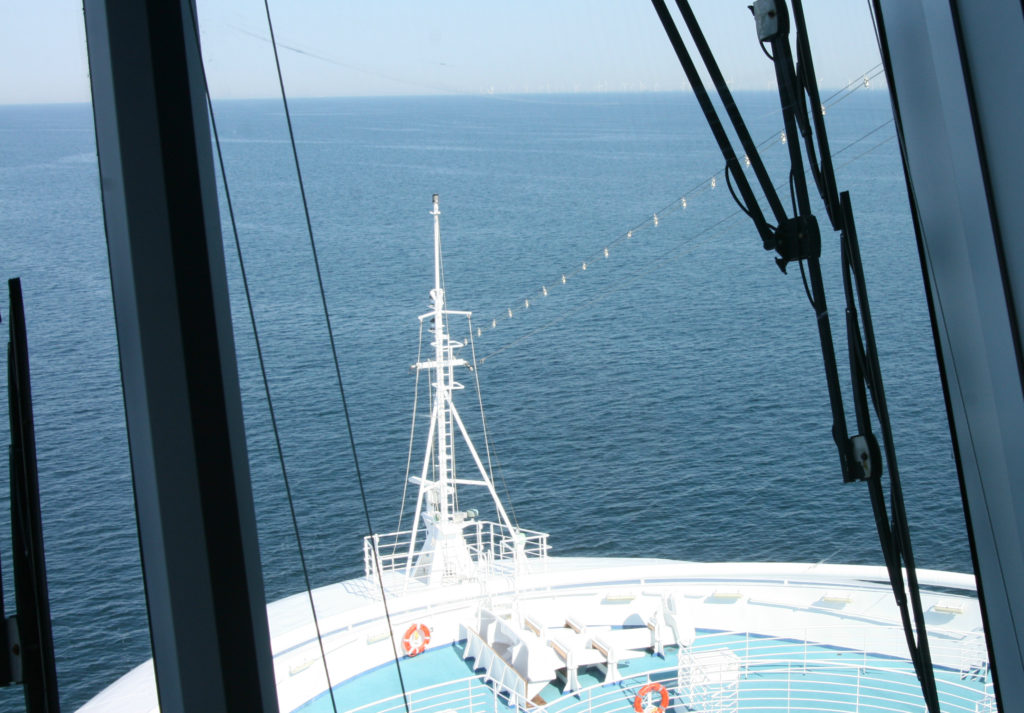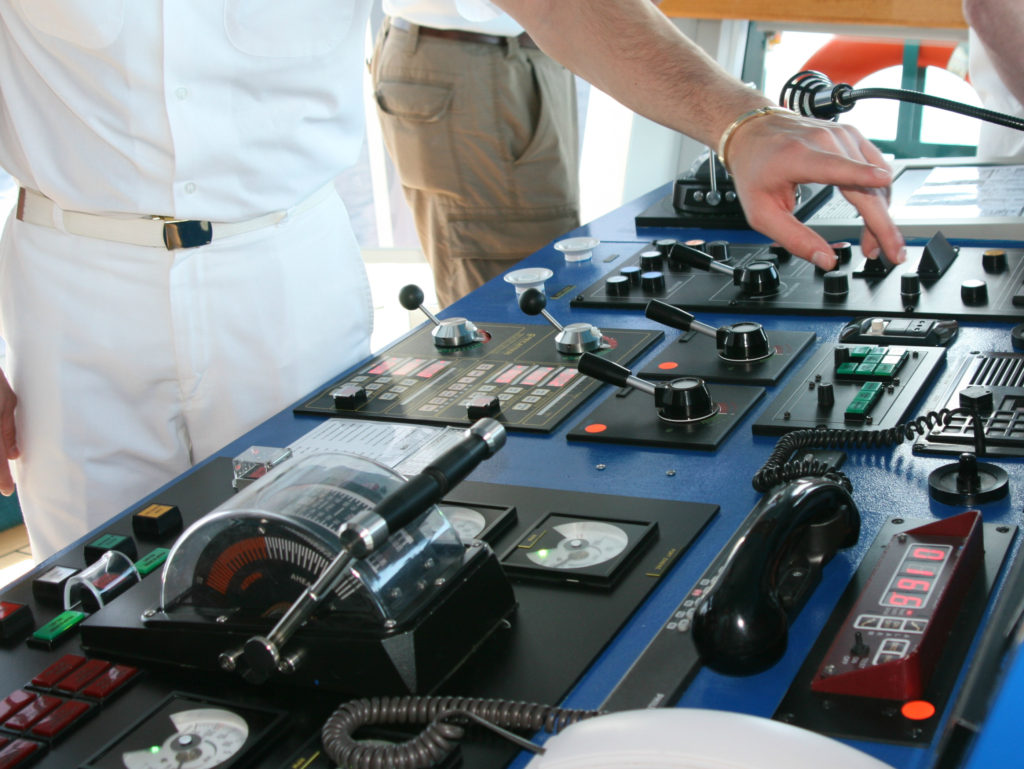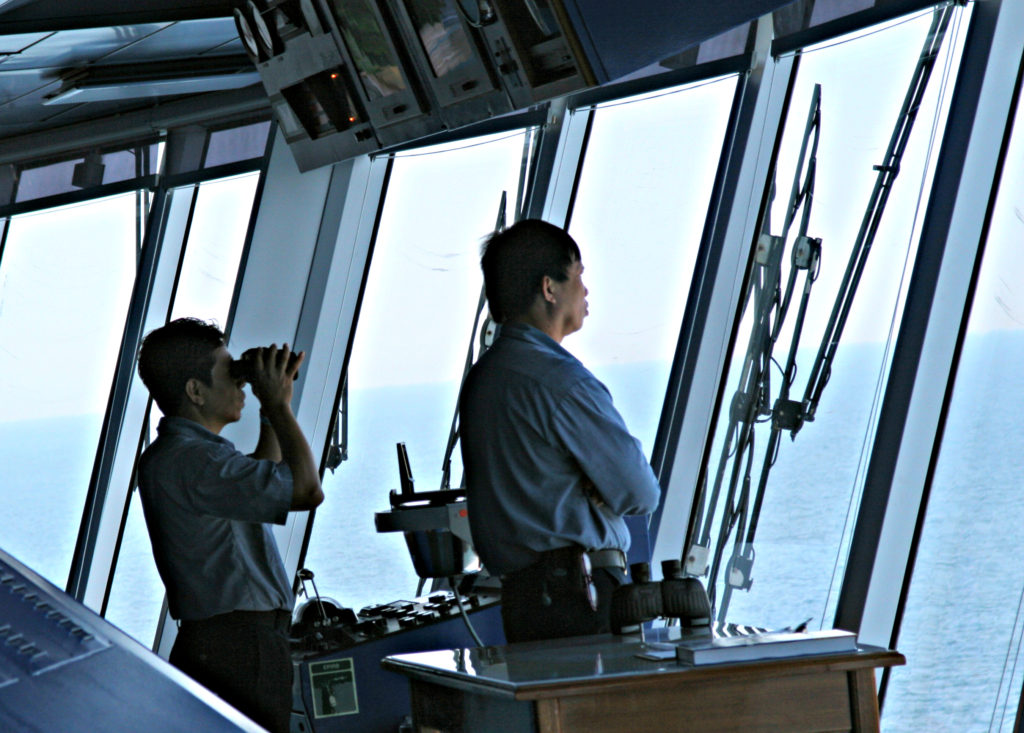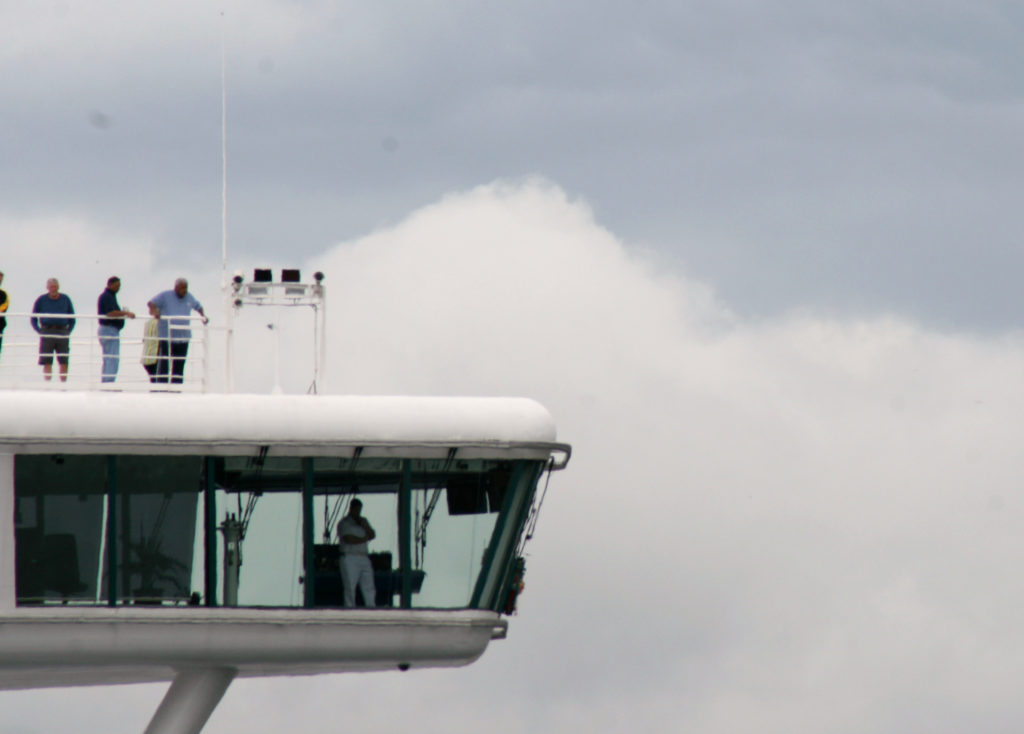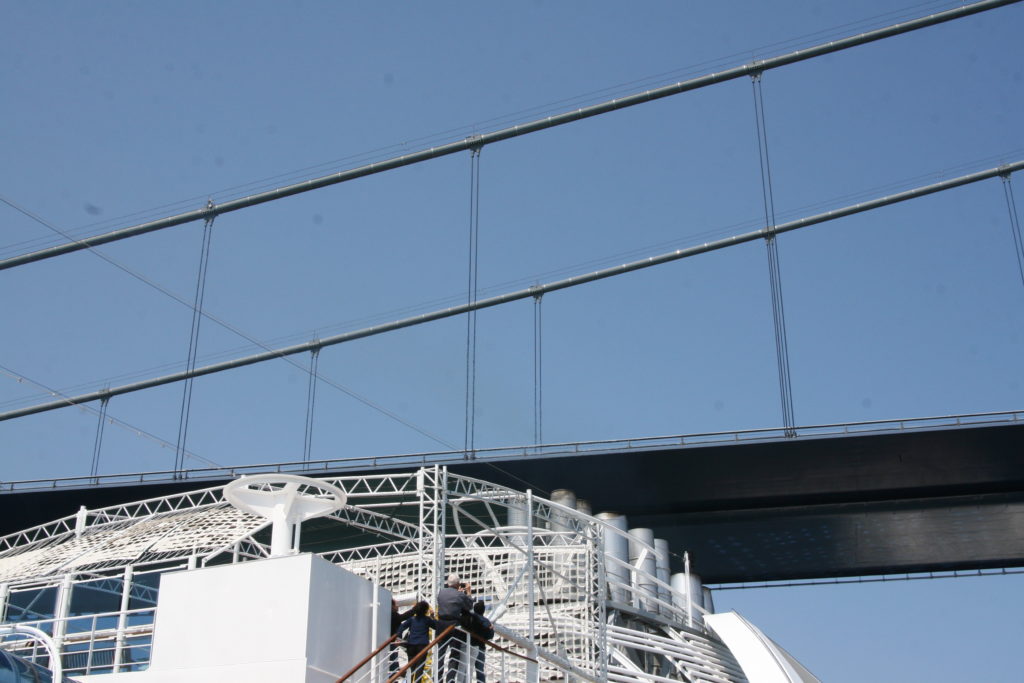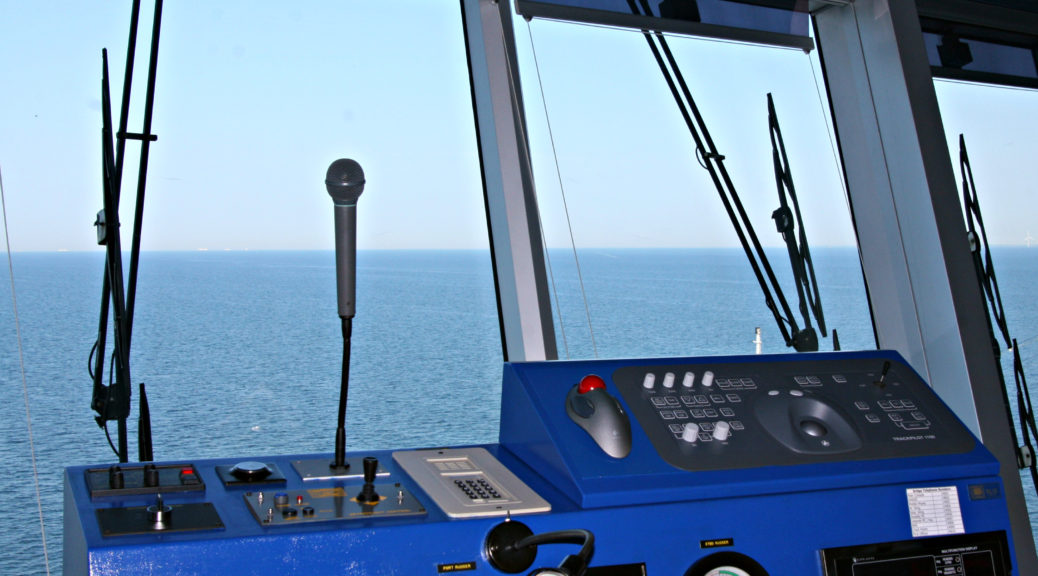
Ultimate Cruise Ship Tour
After exploring Copenhagen and Bornholm, it was time to board our cruise ship, Star Princess, and begin our Baltic Cruise. But first I am going to tell you about something we did on board the ship that we found very interesting. So this will be a bit of a different blog entry, because I will not be sharing information about a particular place, but rather our “behind the scenes” tour of our cruise ship that would give us insight into all that goes into making a voyage a positive experience for the ship’s guests.
Princess Cruises offers “Ultimate Ship Tours” on several of its voyages, usually on a “sea day” so you don’t miss the opportunity for shore excursions at the different ports of call. We could sign-up for this once we were on board at the Passengers Service Desk. It is offered on a first-come, first-serve basis so it was one of the first things we did after boarding. Just like a shore excursion, there is a cost. I checked the Princess website and it currently lists a cost of $150 per person for an approximate three-hour tour. We did the tour in 2010 so things may have changed, but as part of the tour we were given a chef’s jacket, a robe, personalized ship’s stationary and pictures of the group as we toured the different parts of the ship. According to the tour description on the Princess website, they have added two additional areas since we toured – the incinerator room which processes waste and the “Funnel” which the website describes as providing great views of the ship and ocean. We were allowed to take pictures except while in the Engine Room. The staff was very accommodating and took time to make sure our questions were answered.
The first area we toured was back stage. Theatrical productions are a big part of the cruise ship experience. Most ships have a theater on board featuring high quality productions. We were able to be on stage, but more interestingly, visited the dressing rooms which were located immediately behind the stage. Costumes are organized on racks in the order they will be needed by performers. Actors and actresses receive assistance in changing as they sometimes must be back on stage within 30 seconds. Fasteners are usually velcro which speeds the changing process. Pictures of a dressing room follow as well as two pictures from an actual production.
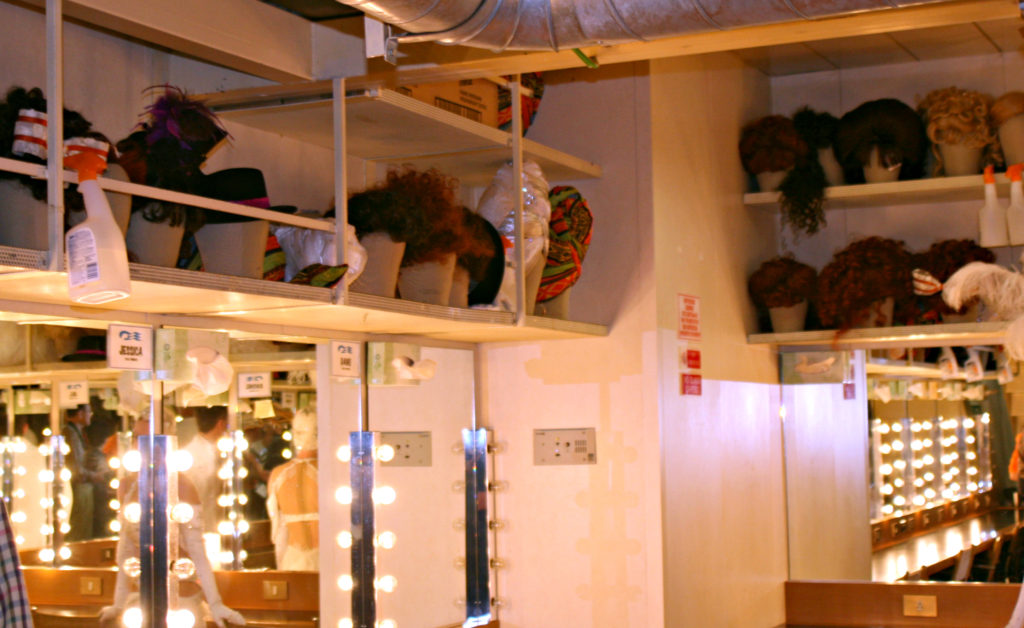
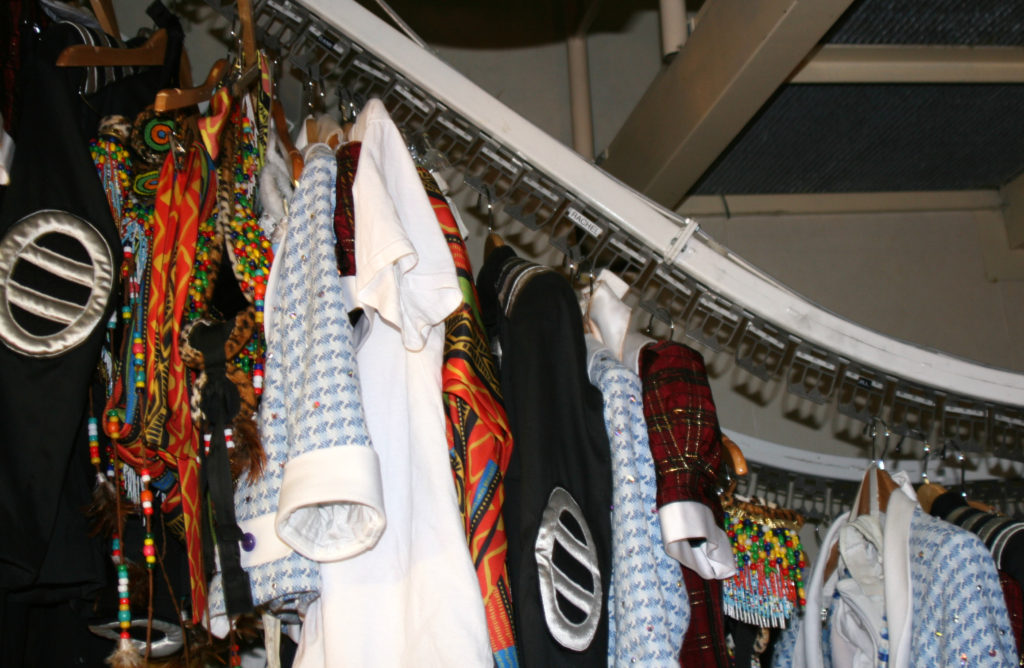
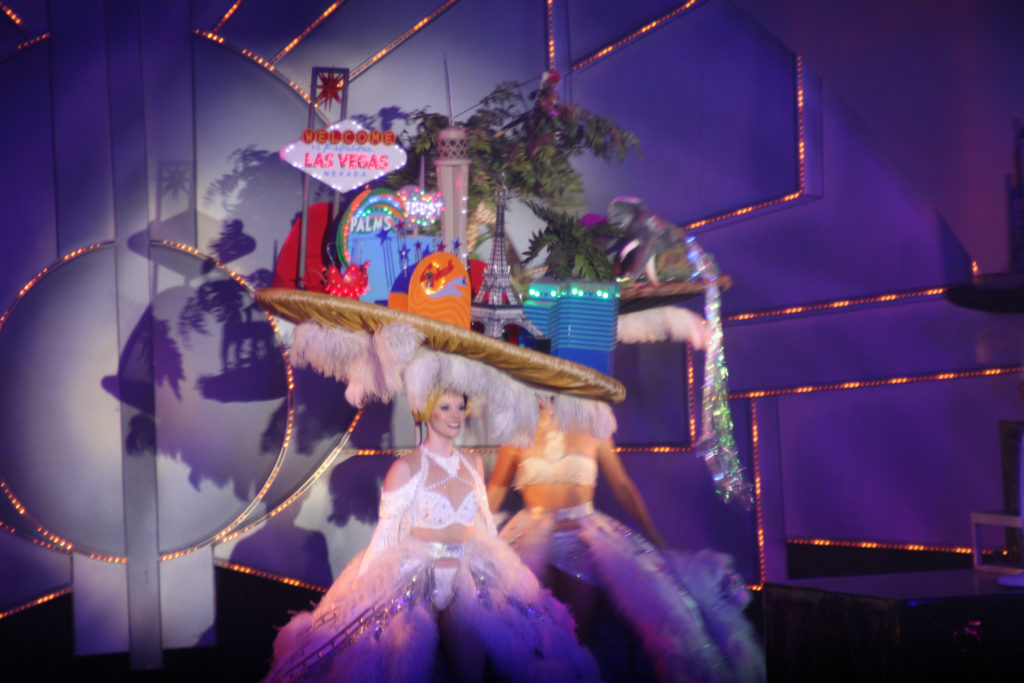
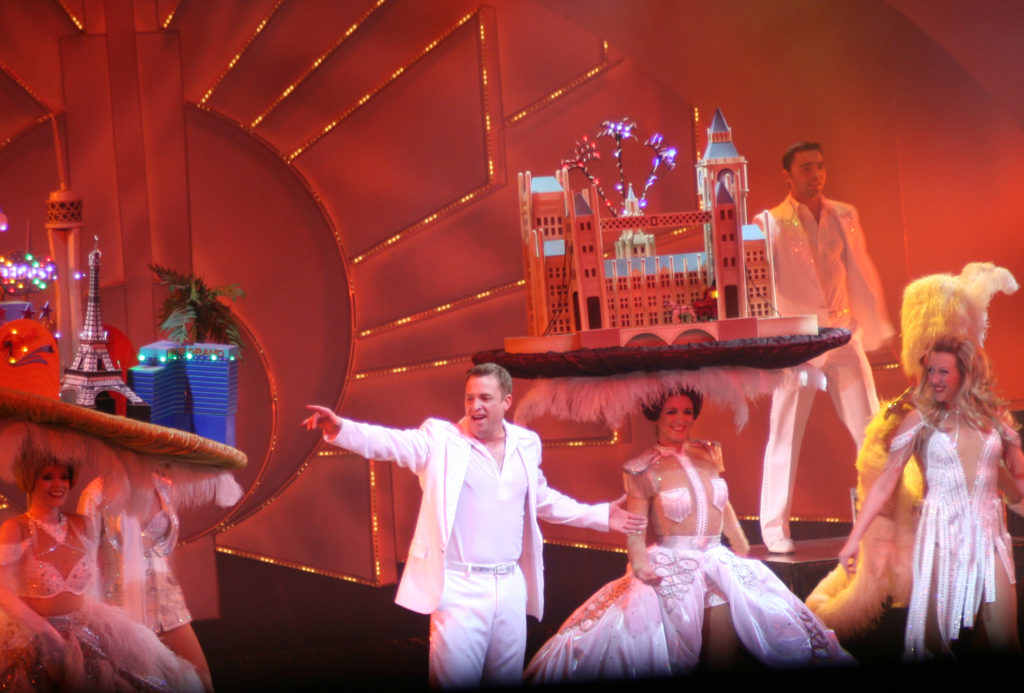
As I noted earlier, we visited the Engine Room but were not allowed to take pictures due to security issues. Another operational part of the ship we saw was the deck with the mooring and heaving lines. Heaving lines are thrown to the dock or another ship before heavier mooring lines anchor the ship. The end of the heaving line has a knot painted red so it can be easily seen. In the first picture below you will see one of the crew holding a heaving line. This is followed by a picture I took later when a heaving line was thrown to another vessel that was going to refuel our ship. You can see the red knot of the heaving line – I have an arrow pointing it out in the picture.
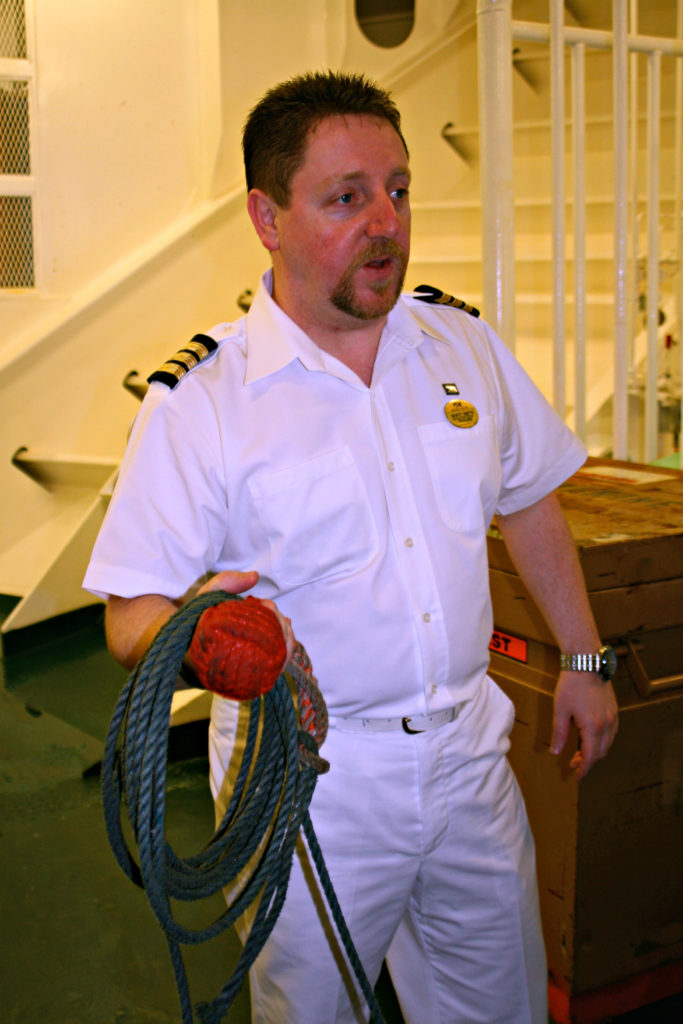

The crewman in the first picture below is holding a mooring line. It is passed through access ports (second picture) on the ship and then used to anchor the ship to a dock. I have also included pictures I took later showing these mooring lines in use. The tension of the mooring lines is monitored and adjusted as needed to keep the ship steady.

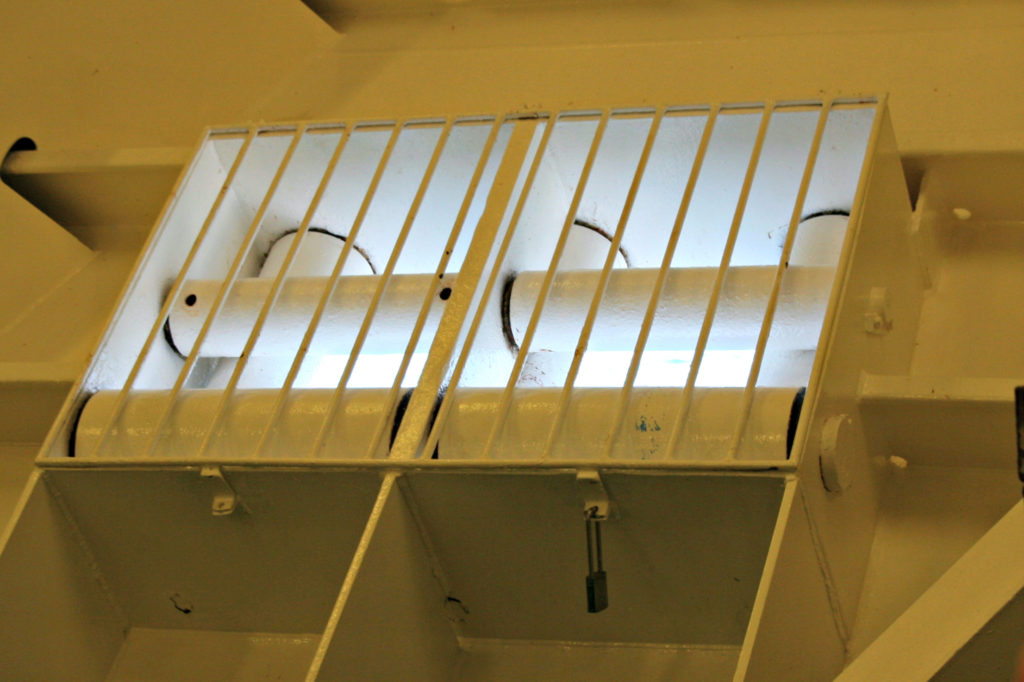

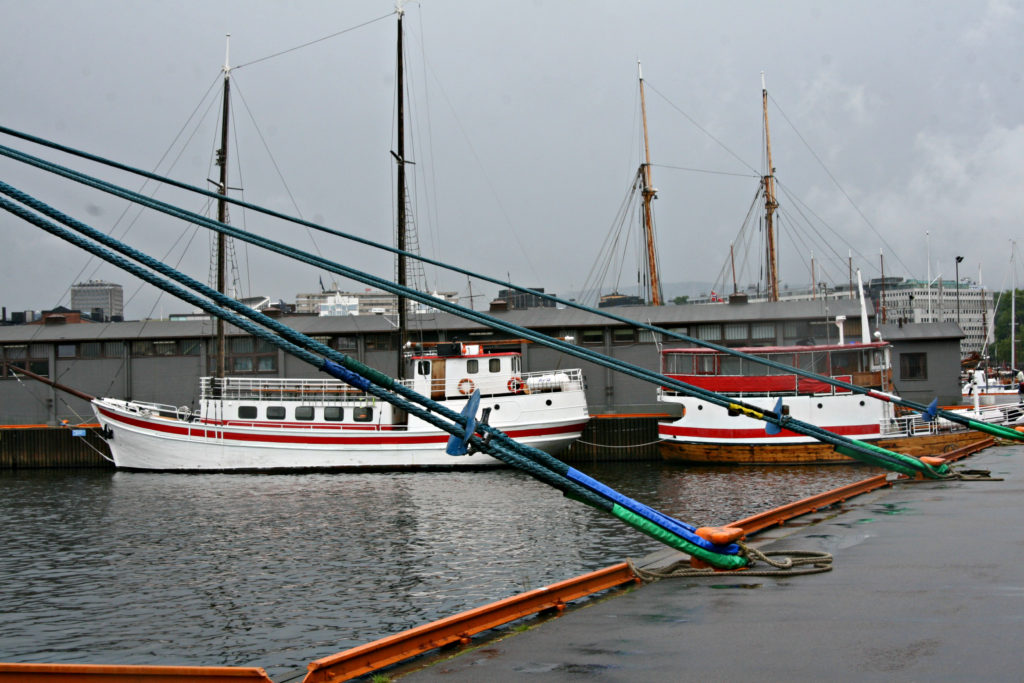
The crew’s quarters are often below the water level. On the Star Princess, they were on Deck Two. Just like passengers have a Purser’s Desk for finalizing payments for onboard expenditures, there is also a Purser’s Desk available for crew to handle their pay, etc.

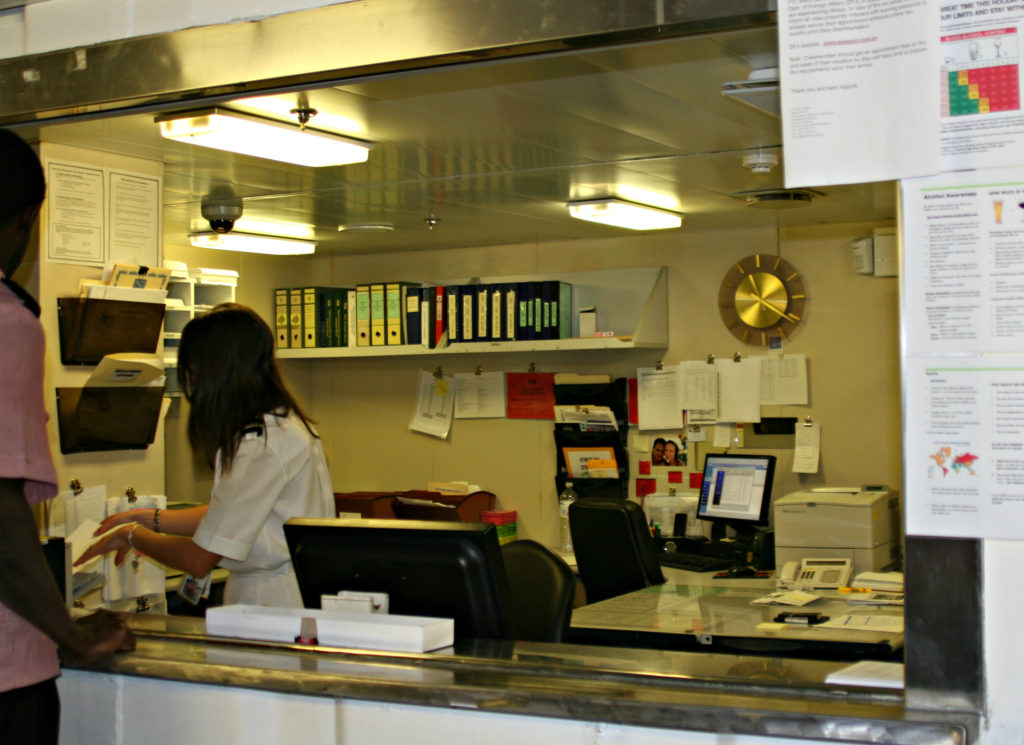
If you have been on a cruise, you know that they have photographers on board and will make their pictures available to you for purchase. There is a Photography Lab that processes these pictures. Princess cruise ships also have a Print Shop aboard responsible for printing menus, newsletters, and information sheets on the different ports. The pictures below were taken in the Print Shop.
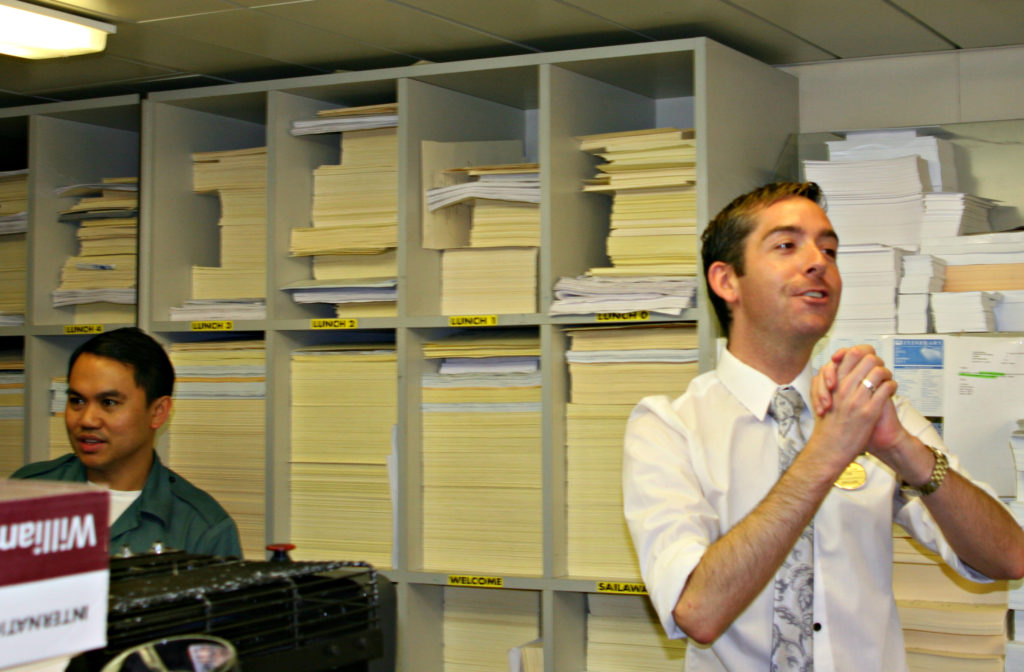
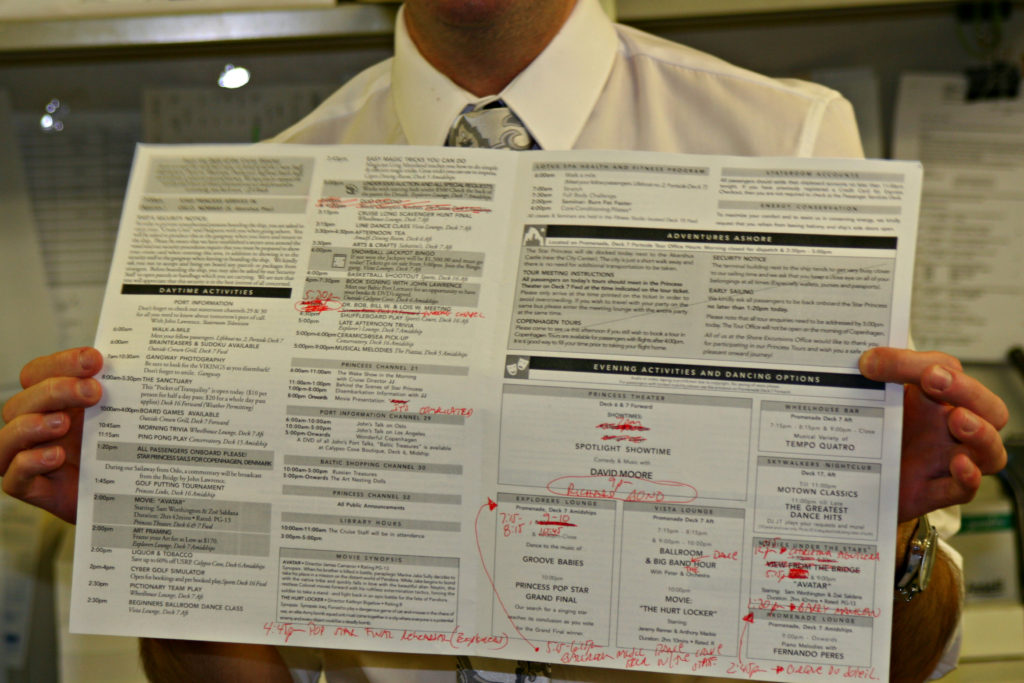
One of the places that I found very interesting – surprisingly so – was the Laundry Facilities. Large, heavy-duty washers and dryers launder and dry sheets, towels and clothes for both passengers and crew. A “blow-up” form allows workers to easily hang shirts and blouses. And probably the most fascinating was a sheet folding machine. If it weren’t for the space required, I would love to have one of these at my house. After being washed, dried, folded or hung, laundry is taken to passengers’ and the crew’s cabins. The last pictures shows bedding and towels ready to be wheeled to the many cabins aboard.
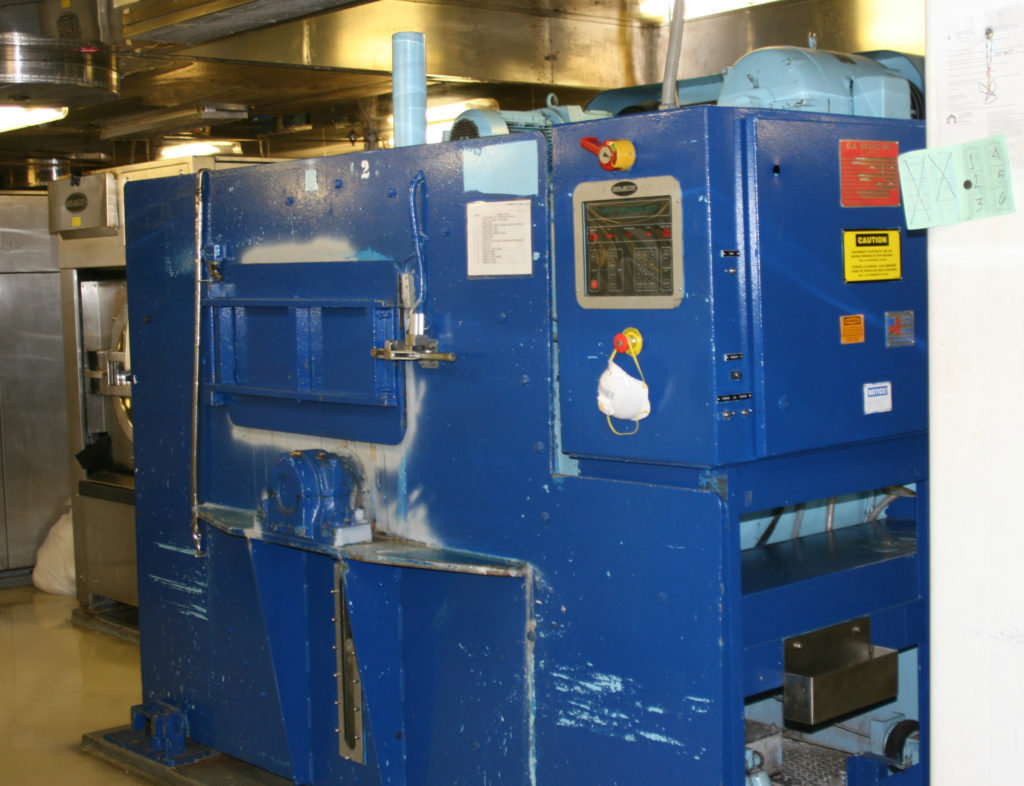
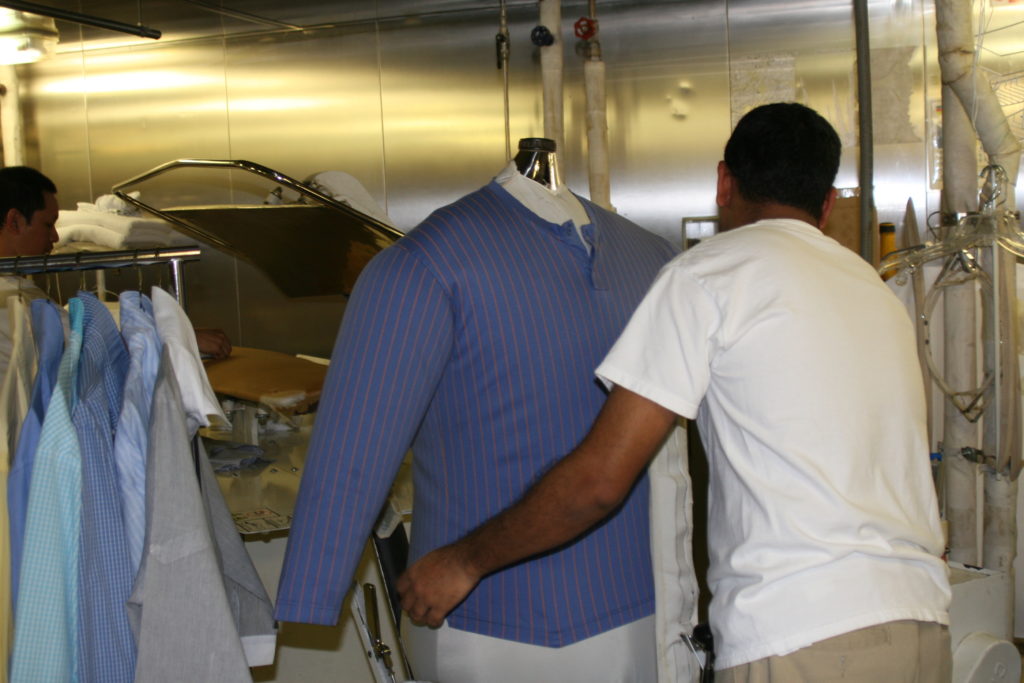



Of course a place you never want to visit while on vacation is a medical facility, but there is a Medical Center on most cruise ships. On the Star Princess, the Medical Center was staffed by a physician and nurses. There is a treatment room, a lab and the ability to keep an ill person in the Medical Center if necessary. The Center also has medical equipment packaged according to the type of emergency so it can be quickly taken to a patient anywhere on the ship. In addition to relatively minor injuries and illnesses, the doctor shared that there can be serious problems that must be addressed, sometimes necessitating a patient being transported to a hospital (generally to the closest port).
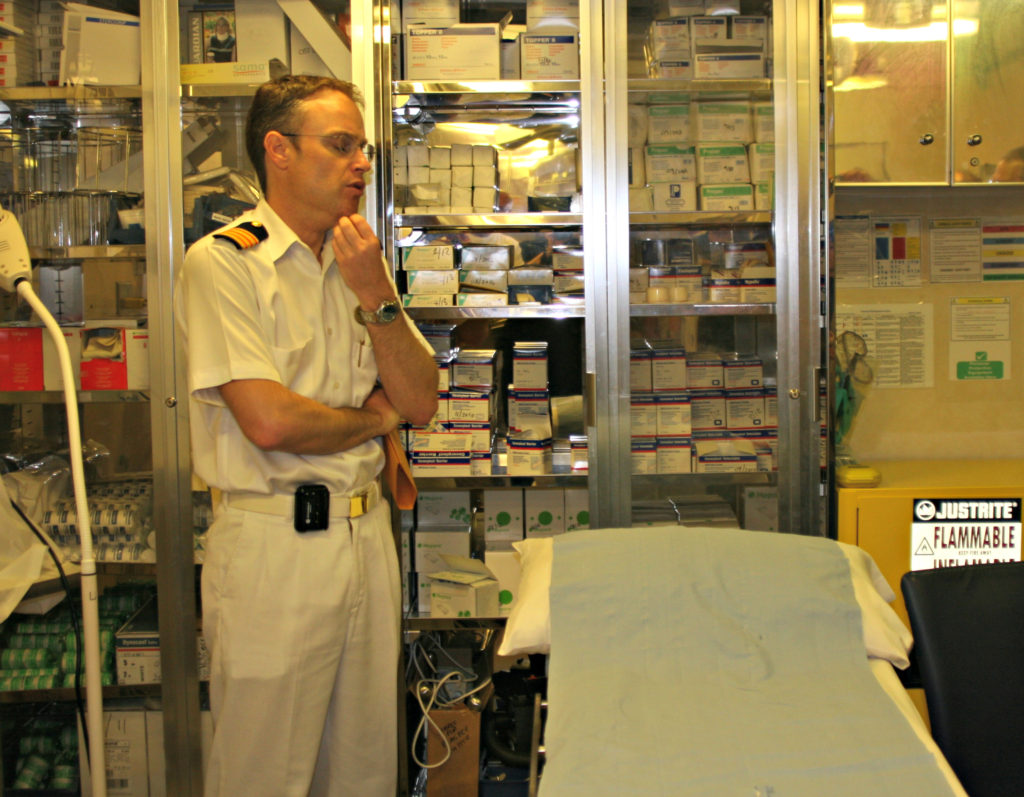

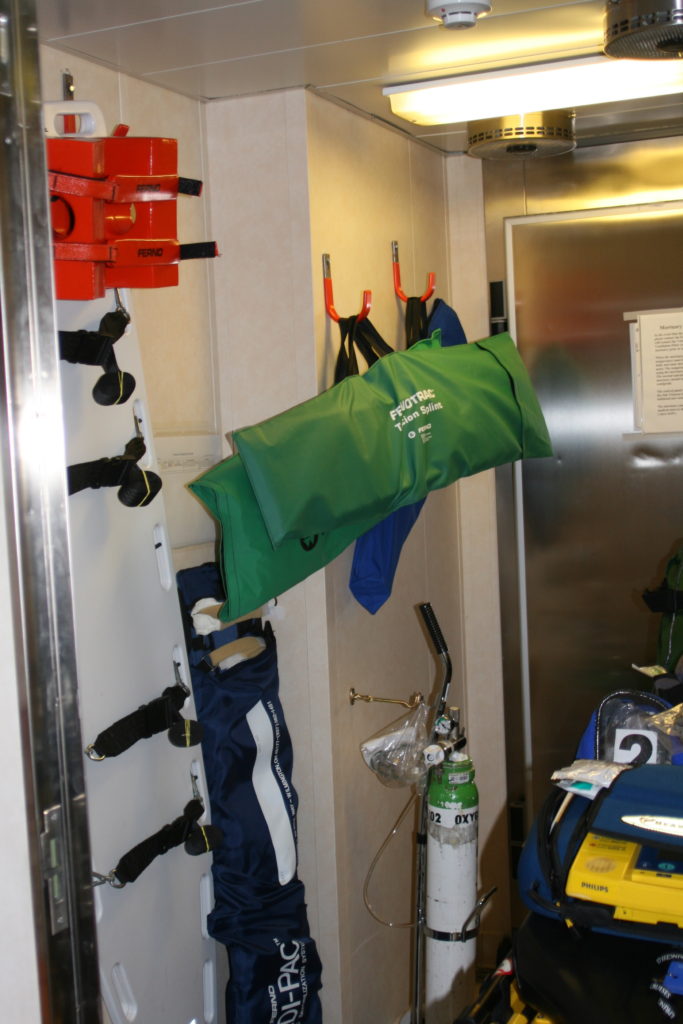
We also visited the Food Preparation and Food Storage areas. The first picture below is one of the refrigeration units and the next is where some of the beverages are stored. Of course everything is made in very large quantities. The third picture is a tub of soup cooking and the next picture shows a machine that functions as a rolling pin, rolling out dough for the many rolls and loaves of bread that are baked. The fifth picture is one of the meal preparation areas; there is a different one for each kind of meat. Finally one of the finished products – a fancy dessert – is pictured.
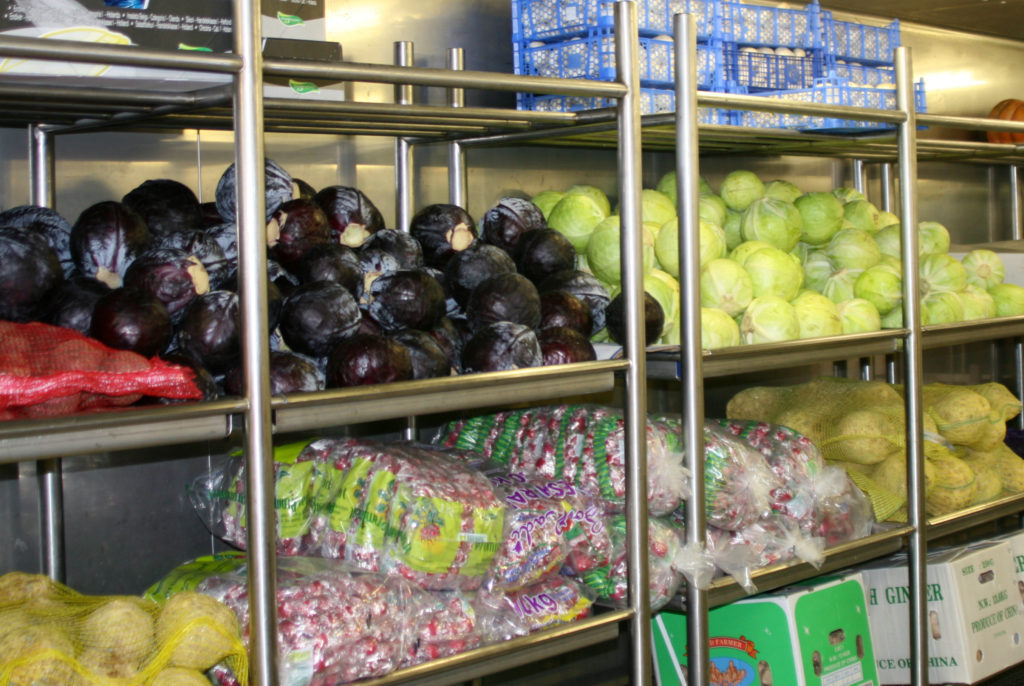
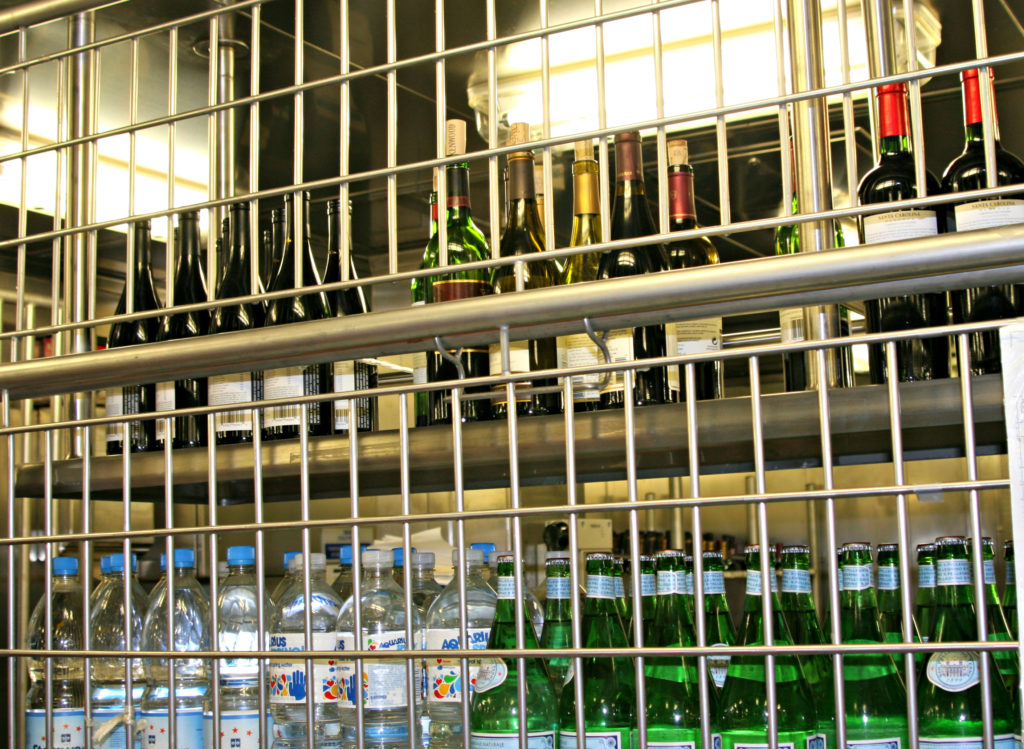
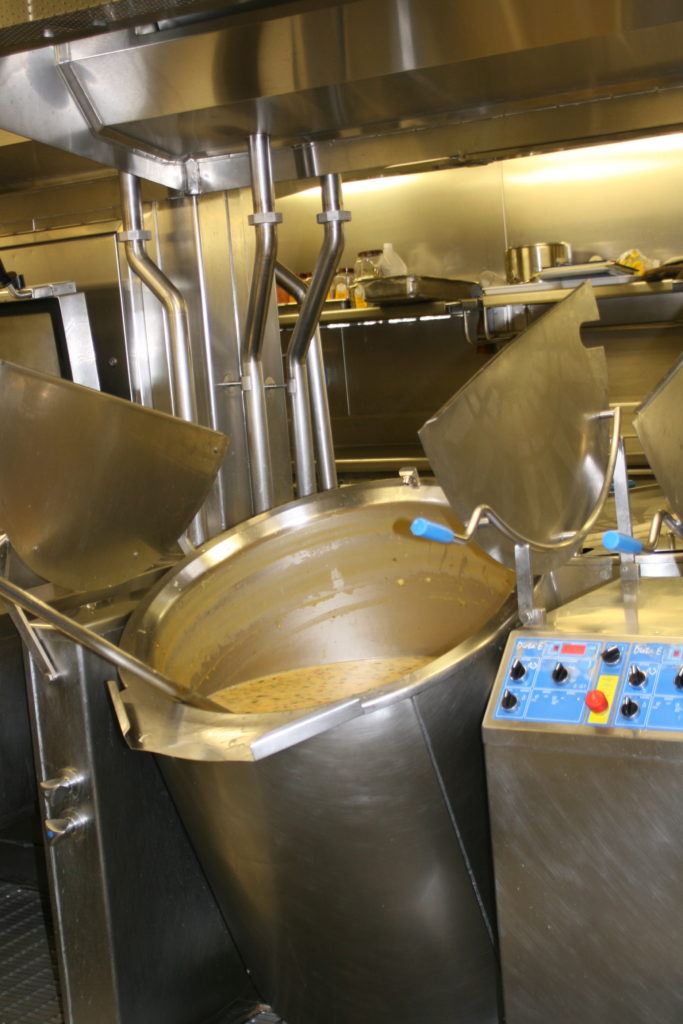
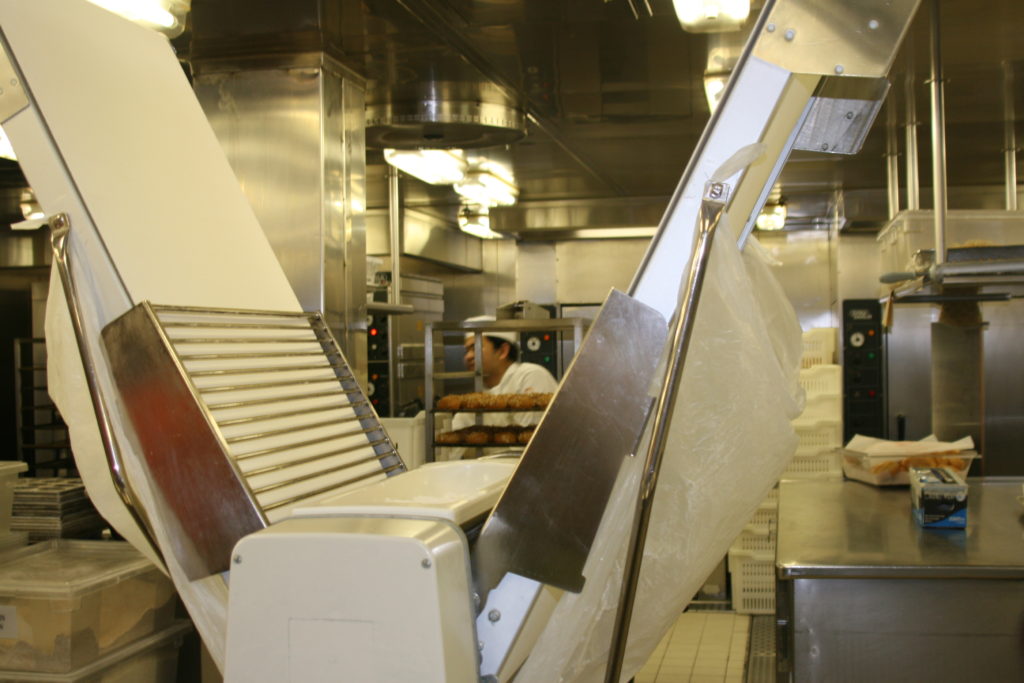
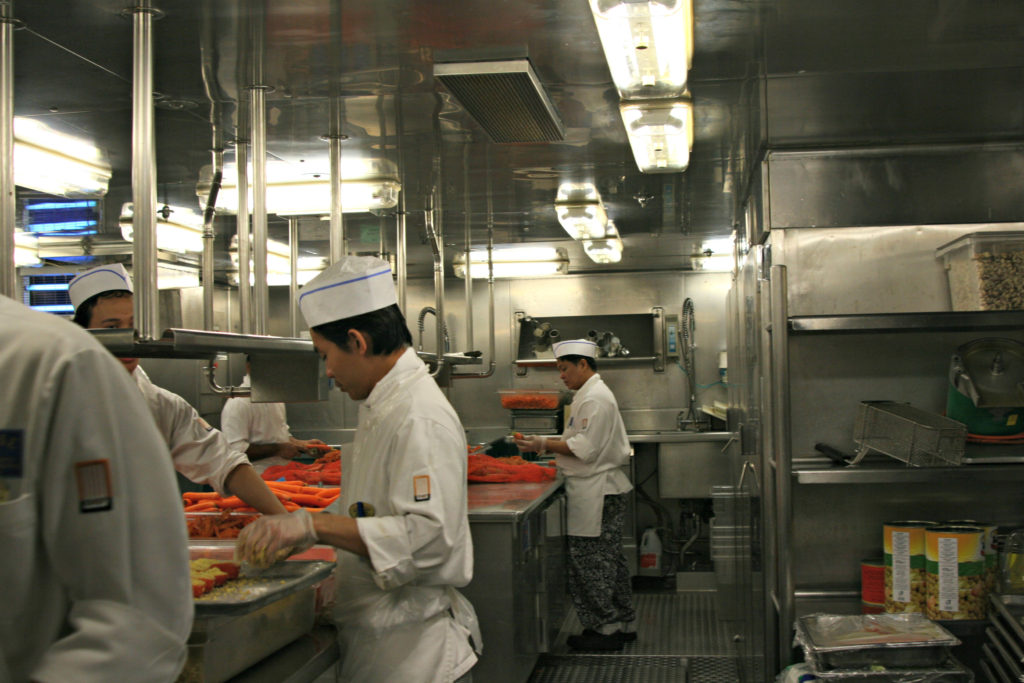
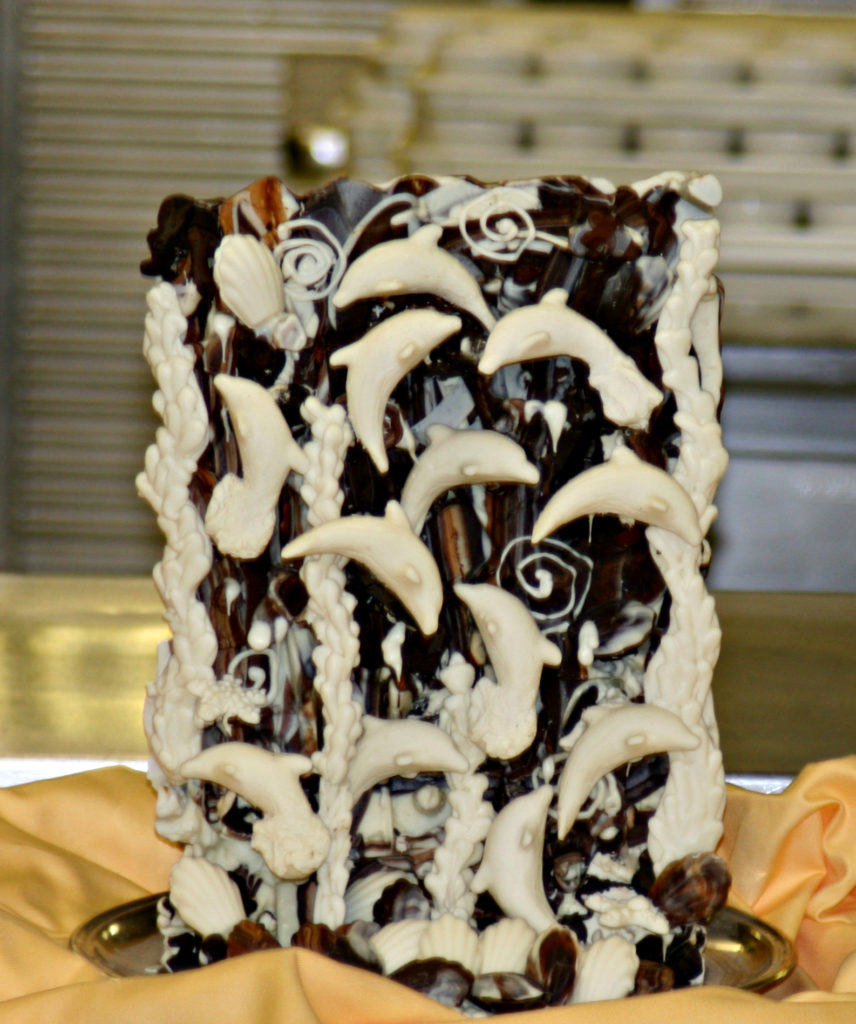
Probably the part of the tour we most looked forward to was the Bridge. At the time we participated in the tour, the Star Princess was boasting an Integrated Bridge System which meant the different components of the system could “talk” with each other. I would imagine other ships also have this technology or that what we saw as futuristic in 2010 has been replaced by even better systems now. We learned that those on the Bridge work eight hours, but they are in four hour shifts, separated by an eight hour sleep/rest period. In addition to the officers serving on the Bridge, there are also two Able Seamen who keep a visual watch. This was required by law at the time of our tour (and may still be required).
Adjacent to the Bridge is the Safety Center. There are systems in place to prevent the spread of a fire including fire retardant doors, the ability to shut down portions of the ventilation system and a sprinkler system. The ship is also segregated into nineteen watertight compartments on the lower decks. The Bridge can close the watertight bulkheads in less than a minute in an emergency situation. If an object would prevent the doors from closing, the doors can simply cut through the object in the way. If the ship were damaged, there could be a need to lessen the weight at the top of the ship. A fast way to do this is to drain the swimming pool – a crew member in the Safety Center can do this with a simple flip of one switch. The crew also can shut down engines, isolate fuel lines and switch off fuel pumps from the Safety Center. The public address system is operated from here and the ship can be monitored from the Safety Center via a closed circuit television system.
The first picture below shows the windows on the Bridge allowing for a clear view of the waters ahead. The second picture is a radar screen. It can acquire information about other ships in the area including their course, how close they will pass by our ship and the time they will pass. The next two pictures are of a console that has safety and communications equipment. The fifth picture is of the two seamen on watch. They must maintain continuous lookout and can manually steer the ship if needed. Our captain told us he trusted the seamen more than his equipment. The sixth picture is a picture of the Bridge I took from our cabin balcony.
The Senior Officer of the Watch, First Officer, Second Officer and Navigator share responsibility for the operation of the ship when the Captain is not on the Bridge. The Captain said he would always be on the Bridge when approaching a port, if there is a great deal of ship traffic, or in circumstances of “confined navigation.” Such a situation would arise later that day when we would travel under the Great Belt Bridge which connects the Denmark islands of Zealand (where Copenhagen is located) and Funen. The crew took on pilots to assist the Captain in maneuvering under the bridge. The last picture shows the Star Princess as it sails under the Great Belt Bridge. You can see there is little room for error and why the Captain would want to be carefully monitoring the ship to ensure it passes safely under the bridge.
We had been on a few cruises before this one and never gave much thought to everything happening behind the scenes that enabled us to have an enjoyable and safe cruise. The Ultimate Ship Tour certainly gave us insight into the many people and all of the equipment in place to make our experiences memorable ones.
